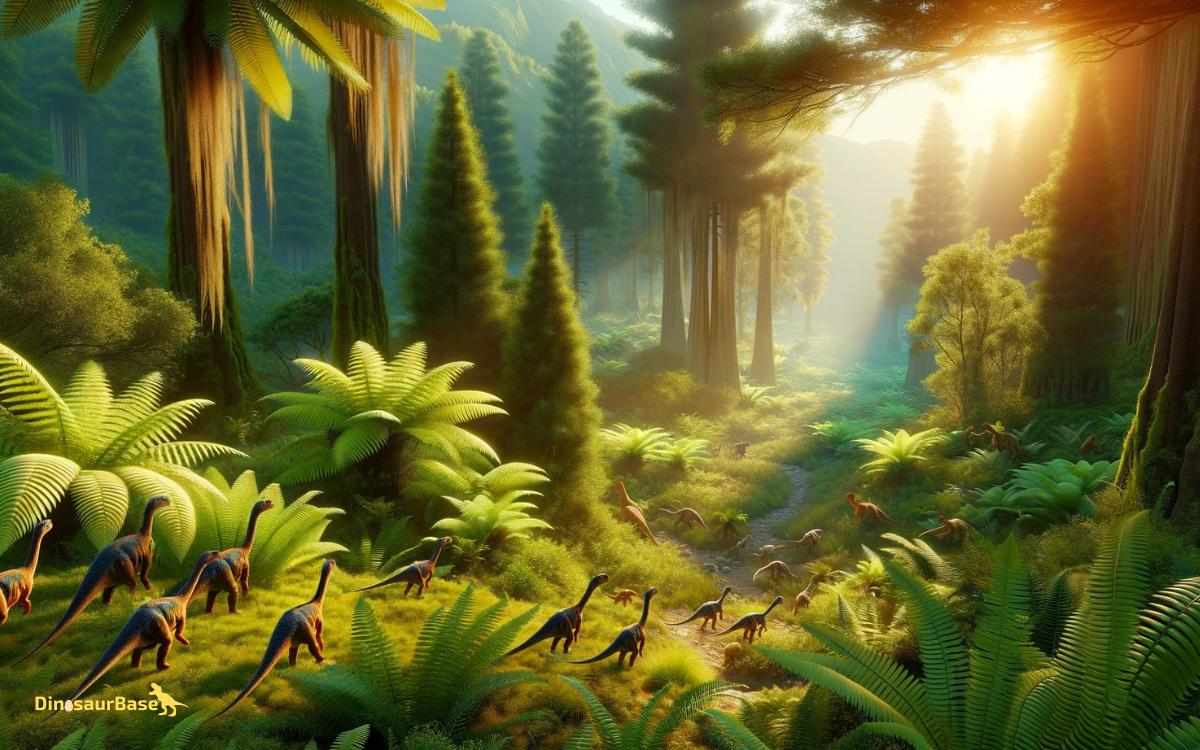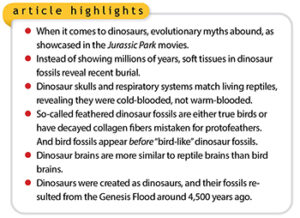When Did Dinosaurs First Appear? 230 million years ago!
Opening the dusty pages of Earth’s prehistoric diary, one finds the chapter on dinosaurs begins in the Triassic Era, over 230 million years ago.
Scientists have pieced together this ancient puzzle, revealing that these magnificent creatures didn’t just appear overnight; they were the product of millions of years of evolutionary advancements.
The journey from the pre-dinosaur world to the dominance of these colossal beings offers a fascinating insight into Earth’s dynamic history.
However, understanding the exact moment and the environmental shifts that allowed dinosaurs to thrive remains a topic ripe for further exploration, inviting one to ponder the intricate dance between life and the planet’s ever-changing stage.


Key Takeaway
The Pre-Dinosaur World
Before the reign of dinosaurs, the Earth was a vastly different place, teeming with life forms that would eventually pave the way for their emergence.
This pre-dinosaur era, primarily the late Carboniferous and Permian periods, witnessed the dominance of amphibians and the rise of the first amniotes, ancestors to both modern reptiles and mammals.
These early amniotes diversified into various ecological niches, laying the groundwork for future terrestrial ecosystems.
The planet’s climate oscillated between warm and icehouse conditions, driving evolutionary adaptations crucial for survival. Plant life, dominated by ferns, conifers, and cycads, provided the necessary sustenance for these terrestrial communities.
This dynamic interplay of flora and fauna set the stage for the evolutionary novelties that would characterize the Mesozoic era, marking a significant transition in Earth’s biological history.
Unearthing the First Dinosaurs
The discovery of the first dinosaurs, dating back to the late Triassic period, marked a pivotal moment in paleontological research, shedding light on the origins and early evolution of these prehistoric giants.
This breakthrough provided a wealth of information on the diversification of life on Earth.
Key findings include:
- Herrerasaurus, one of the earliest known dinosaurs, highlighting the group’s rapid diversification.
- Eoraptor, suggesting a common ancestor for all dinosaurs.
- Plateosaurus, showcasing early herbivorous adaptations.
- Coelophysis, revealing insights into early carnivorous dinosaurs.
- Saturnalia, indicating early social behaviors.
These discoveries underscore the complexity and diversity of early dinosaurs, challenging previous notions and setting the stage for further explorations into their evolutionary journey.
The Triassic Era Explained
Spanning from approximately 252 to 201 million years ago, the Triassic era served as a critical period for the emergence and evolution of dinosaurs, setting the foundation for their dominance in the Mesozoic era.
Following the Permian mass extinction, the Triassic heralded a time of significant geological and climatic shifts, which facilitated a divergent evolution of life. The era’s distinctive sedimentary layers, rich in fossils, indicate a dramatic transformation in Earth’s flora and fauna.
Terrestrial ecosystems, previously devastated, began to flourish anew, paving the way for the ascendancy of dinosaurs. The Triassic’s end, marked by another mass extinction event, underscored a volatile yet pivotal epoch in Earth’s history.
This era’s intricate tapestry of life, extinction, and rebirth underscores its significance in the evolutionary narrative of dinosaurs.
Evolutionary Milestones
Understanding the evolutionary milestones of dinosaurs reveals a journey marked by significant adaptations and diversifications that propelled these creatures to dominate terrestrial ecosystems for millions of years.
This evolutionary narrative is underscored by key developments:
- The divergence of dinosaurs into two main groups: the ornithischians and saurischians.
- The evolution of bipedal locomotion, which offered advantages in mobility and feeding strategies.
- The development of complex social behaviors, including nesting and possibly herding.
- The appearance of feathers in certain dinosaur lineages, indicating a shift towards endothermy.
- The eventual emergence of avian dinosaurs, leading to the birds we know today.
These milestones underscore the dynamic evolutionary path of dinosaurs, showcasing their adaptability and the complex interplay of environmental pressures and biological innovation.
The Impact on Earth’s History
Exploring the evolutionary milestones of dinosaurs sets the stage for examining their profound influence on Earth’s geological and biological history.
The presence of dinosaurs, spanning over 160 million years, significantly sculpted the planet’s landscape and the evolutionary pathways of contemporary flora and fauna.
Their reign, characterized by diverse species, sizes, and ecological roles, underscores a pivotal period in Earth’s chronology, highlighting their role in shaping the biosphere.
| Impact Area | Description |
|---|---|
| Geological | Dinosaurs contributed to soil formation and sediment displacement, altering landscapes. |
| Biological | They played crucial roles in the evolutionary pressures on plants and the rise of mammalian species. |
| Ecological | Their existence influenced the structure of ecosystems, determining predator-prey dynamics. |
| Evolutionary | Dinosaurs’ extinction events spurred significant evolutionary diversification in surviving species. |
Conclusion
In sum, the grand tapestry of Earth’s prehistory was irrevocably altered with the advent of dinosaurs during the Triassic era.
These magnificent creatures, emerging amidst a world of primordial chaos, embarked on an evolutionary journey, setting the stage for a dramatic reshaping of the terrestrial realm.
Their legacy, deeply etched into the annals of our planet’s history, serves as a testament to the enduring power of life to adapt, evolve, and thrive against the backdrop of time’s relentless march.





